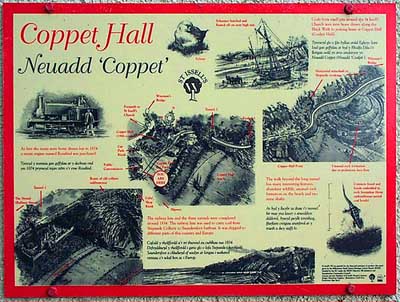|
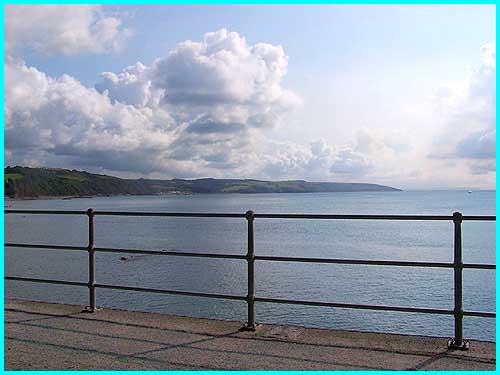 On the last full day of our holiday we did not venture far from Saundersfoot but we did accomplish something that I had wanted to do for a number of years and that is to walk through the tunnels and along the sea wall towards Wiseman's Bridge. Not only is this part of the local Miner's Walk but it is also the long distance Pembrokeshire Coastal Path which starts a little further along the coast at Amroth (centre of this picture). Frequent seats along this part of the path tempted us to sit a while in the warm sunshine before we reached Wiseman's Bridge and then we turned and retraced our steps back to Saundersfoot. |
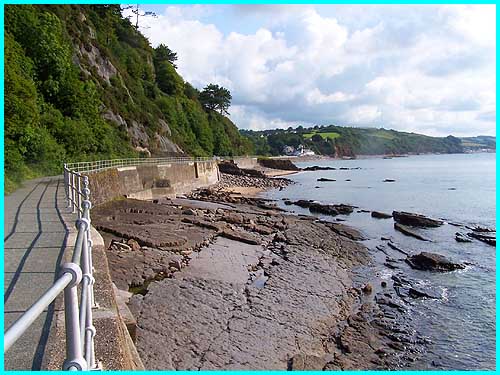 The name Wiseman's Bridge owes its origin to Andrew Wiseman, a feudal land-owner of 1324 but this unusual rock formation on the beach is due to a much earlier occurrence, a prehistoric lava flow. |
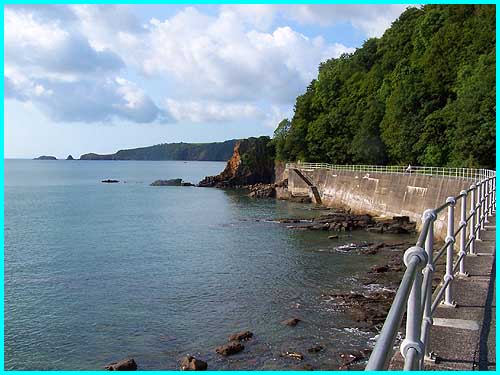   The
route of the path beneath the cliffs follows the old mineral
railway line that connected Stepaside with Saundersfoot. As we
sat enjoying the summer sunshine we were given a timely reminder
of another season. Usually more closely associated with Christmas,
a robin busied himself among the wild flowers at the foot of
the cliff. The
route of the path beneath the cliffs follows the old mineral
railway line that connected Stepaside with Saundersfoot. As we
sat enjoying the summer sunshine we were given a timely reminder
of another season. Usually more closely associated with Christmas,
a robin busied himself among the wild flowers at the foot of
the cliff. |
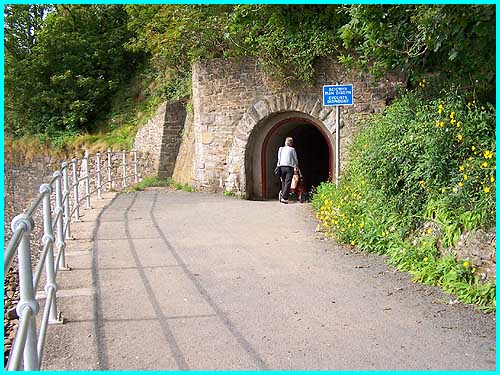 There are three tunnels between Wiseman's Bridge and Saundersfoot cutting through headlands at Coppet Hall. This is the entrance to the first one closest to Wiseman's Bridge and before going any further it is perhaps worth mentioning that Wiseman's Bridge place in modern history was secured when Churchill, Montgomery and Eisenhower attended rehearsals for the D-Day landings. |
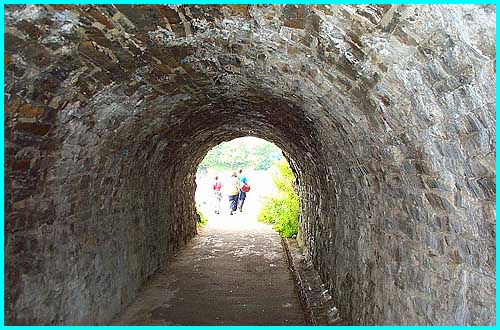 Coal had been mined in the area from ancient times and was loaded into boats after being hauled by horse and cart down Pleasant Valley to Wiseman's Bridge but by 1829, Saundersfoot Harbour had been improved. A tramway and the tunnels were constructed and eventually the coal was hauled by steam engines. |
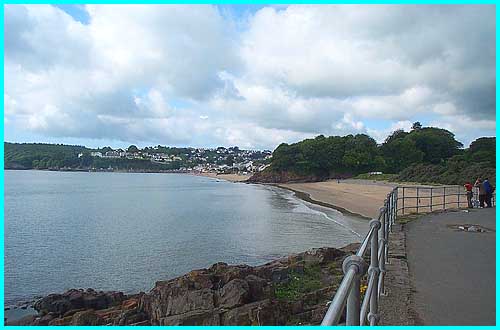 On leaving the first tunnel, Coppet Hall Beach appeared before us with Saundersfoot beyond. The coal mined in the area was revealed in thin seams after the Ice Age but was exceptionally high quality anthracite. Iron ore deposits were also discovered nearby and in the nineteenth century the whole area was a hive of industrial activity. |
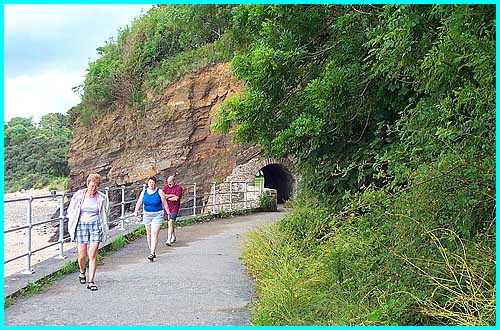 Today the main industry of the area is tourism and as we approached the second tunnel, which is only a short one at the northern end of Coppet Hall Beach, we were passed by many more holidaymakers going in the opposite direction. |
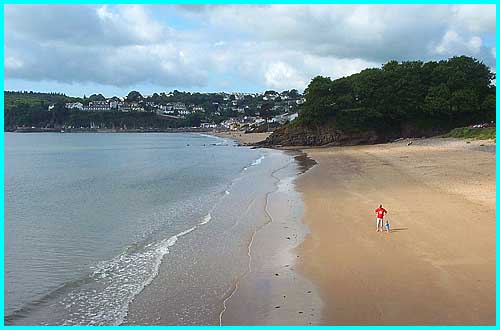 Not everyone was walking along the coastal path though - at least two were having fun on the beach. In the final part of this series, we continue from here to Saundersfoot. |
